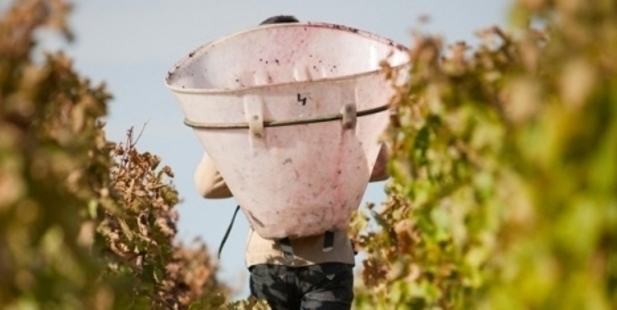Bordeaux: Sip Back and Relax
By Catherine Masters

http://m.nzherald.co.nz/ Tuesday, 01 September 2015 By Catherine Masters
A carefree wine-tasting jaunt in France is as leisurely as life gets, says Catherine Masters.
At Chateau Marquis de Terme, in the Medoc region of France so famous for its reds, Sandrine takes us through the different stages of wine tasting.
First, you look at the red colour. "A good colour is if you can't see your watch through the glass," she says.
Now, move the wine around the glass and watch for the tears. These are the slow or fast drips down the interior of the glass.
If the wine is young, the tears are not very "expressive", explains Sandrine.
Next, you sniff the wine. Put your nose close to the glass and breathe in the aromas and flavours - can you smell blackcurrant?
Now, swirl the wine in the glass and see how it smells differently. "The wine is more open," Sandrine says.
Notice how the colour is redder and the tears are more expressive?
She is right, of course. I don't wear a watch but I can barely see the rings on my finger through the glass and the drips are slower and thicker - they are definitely more expressive than the first bottle.
The wine does smell more open, too; it's more peppery and tastes richer and thicker.
By the time we get to the 2010 bottle the colour is so red I can't see my rings at all.
This was a very good vintage, Sandrine says. The summer was beautiful and they had exceptional fruit - "the weather makes it more beautiful".
Not being a wine expert, my conclusion is that this wine is good enough to drink. I've become more expert than I once was, however, and have discovered that in order to understand French wine you need to get your head around the words appellation and terroir, which come up a lot on this Viking river and wine cruise of Bordeaux.

While many countries call wine by the name of the grape variety (New Zealand included), in France wines are called by the name of the area, and this is accompanied by numerous rules and restrictions. You can only put Champagne on your label, for example, if the wine actually comes from the Champagne region, and the same goes for wines from Bordeaux. The wines can be named after a village or for the wider area.
The ones we have been tasting bear the name of the Chateau, plus the name of the area, which is Margaux, and the location is the Medoc region of France, which is north of Bordeaux. France does this in order to be more precise because, we are told, about 80 per cent of the characteristics of any wine come from the area and not the grape variety.
So, while Chateau Marquis de Terme uses cabernet sauvignon, merlot and petit verdot varieties of grapes, this is not considered as important in labelling as to where the grapes are grown.
This brings us to the concept of terroir, which encompasses a set of factors around the geography, climate and soil of where the grapes are grown. Margaux's soil is gravelly but over in the Sauternes region south of Bordeaux, where they produce sweet white wine, the terroir is different.
At a wine tasting at Chateau D'Arche we learn the terroir here is unique and its combination of factors produces the botrytis fungus known as "the Noble Rot".
Where other vineyards consider botrytis a parasite to be got rid of, here it is treasured.
Only five villages can go under the name Sauternes and the uniqueness of the climate here is thanks to the joining of the Garonne River with a smaller one called the Ciron.
The rivers produce misty mornings creating humidity, a guide here says, which is needed to develop the fungus which penetrates the grape so the water evaporates and this concentrates the sugars.

The seasons here work perfectly because in summer the humidity stops, otherwise the grapes would be totally rotten - "you can make vinegar with rotten grapes but not Sauternes for sure",
The flavours come from the Noble Rot, and from the soil.
"You have to know that 20 million years ago here you had the ocean."
The ocean carried blocks of rocks from the Pyrenees mountain range and deposited them in this small area of 1618ha, which makes up just 2 per cent of the whole of Bordeaux.
Chateau D'Arche is built on one of these blocks of rock, so on the top is gravel, in the middle is clay and at the bottom is silt.
"So what you have to remember," says the guide, "is that without the two rivers we will not have the humidity enough to develop the Noble Rot, without the specific climate we will not be able to stop the humidity and to concentrate the sugar into the grapes, and without the soil, the terroir, and the cepage (grape variety) we will not be able to add all these aromas and flavours to our wines. "It means nowhere else can make Sauternes - Sauternes is unique."
The rules and restrictions here mean that only if you prune, harvest and bottle in Sauternes can you put Sauternes on the label, and if the wine is found to not have the correct degree of sugar and quality you are refused, the guide says. It is forbidden to add sugar, she adds. "If you do this you declassify your wine to the ultimate insult for these premium wine growers - table wine."
CHECKLIST
Details: The eight-day Chateaux, Rivers & Wine cruise starts from $3170pp, based on a November 26, 2016 departure in a standard stateroom onboard Viking Longship Forseti.
The writer travelled to Bordeaux courtesy of Viking River Cruises.
Top photo: The historic vineyard of Medoc, Bordeaux. Photo / 123RF
